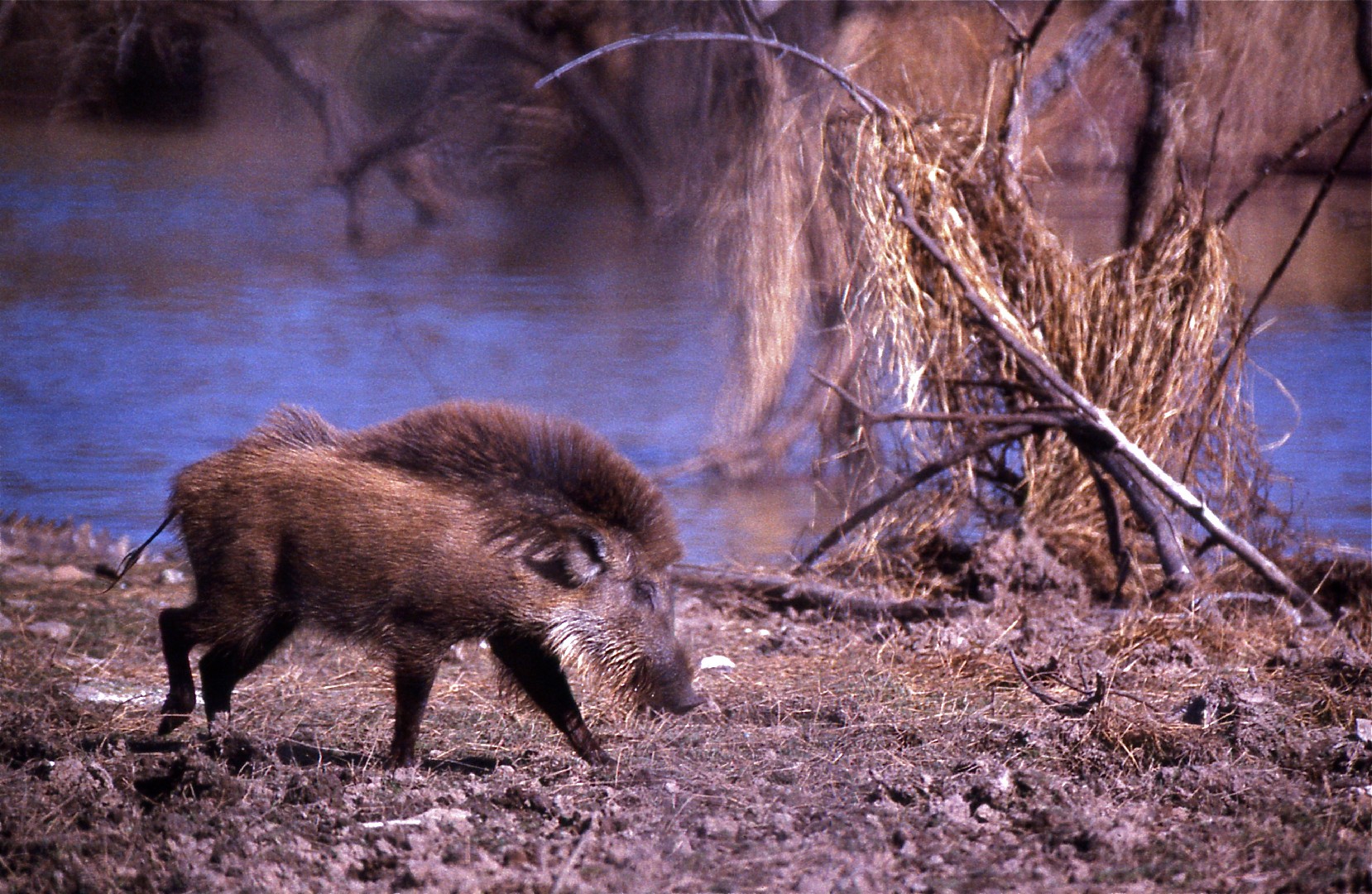Indian boar
A species of Pigs, Also known as Moupin pig Scientific name : Sus scrofa cristatus Genus : Pigs
Indian boar, A species of Pigs
Also known as:
Moupin pig
Scientific name: Sus scrofa cristatus
Genus: Pigs
Content
Description General Info
 Photo By Bernard DUPONT , used under CC-BY-SA-2.0 /Cropped and compressed from original
Photo By Bernard DUPONT , used under CC-BY-SA-2.0 /Cropped and compressed from original Description
The indian boar is an instrumental part of the ecosystem, breaking down organic matter as it roots the ground in search of food. Its precise feeding strategy possibly contributes to seed dispersal and forest regeneration. While perceived as solitary, it forms matriarch-led groups, indicating a high level of social complexity. Its nocturnal nature and skittish behavior are prime adaptive features allowing it to evade many predators.
General Info
Lifespan
20-25 years
Diet
Indian boar is fundamentally an omnivore species with food preferences leaning towards plant-based fare. Constituting a significant part of its nutrition are fruits, tubers, and roots, supplemented by occasional foraging of insects, eggs, and small vertebrates.
Appearance
Indian boar is a robust creature, mid-sized with a thickset, cylindrical body covered in bristly fur. It has a predominant black or dark gray coat with occasional lighter markings. Its distinctive features include pointed ears, a long snout, and curved tusks that are more prominent in males. The aging indian boar may display a varied fur color and reduced physicality.
Behavior
Indian boar typically feeds in the early morning and late evening, preferentially grazing on a wide variety of plants. This species maintains a social structure characterized by small groups, usually led by a dominant male. Unique for its noise-making during mating period, indian boar is also known for wallowing in mud pits to regulate body temperature, illustrating a crucial survival strategy for its natural habitat.